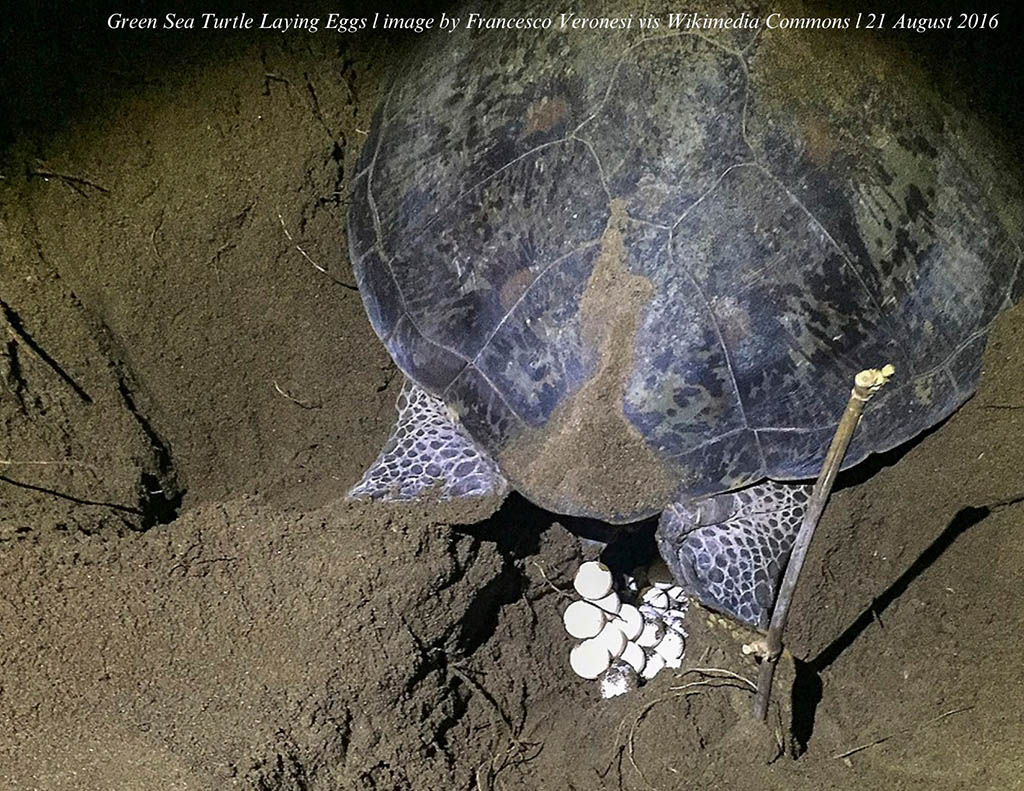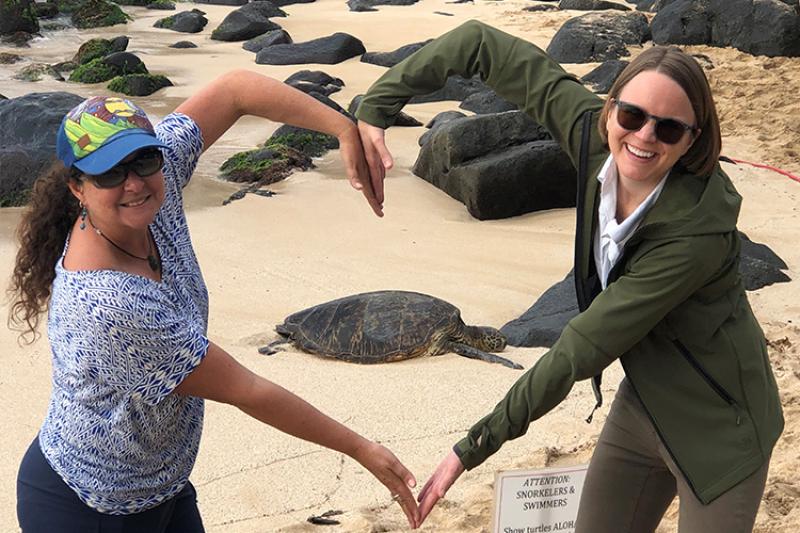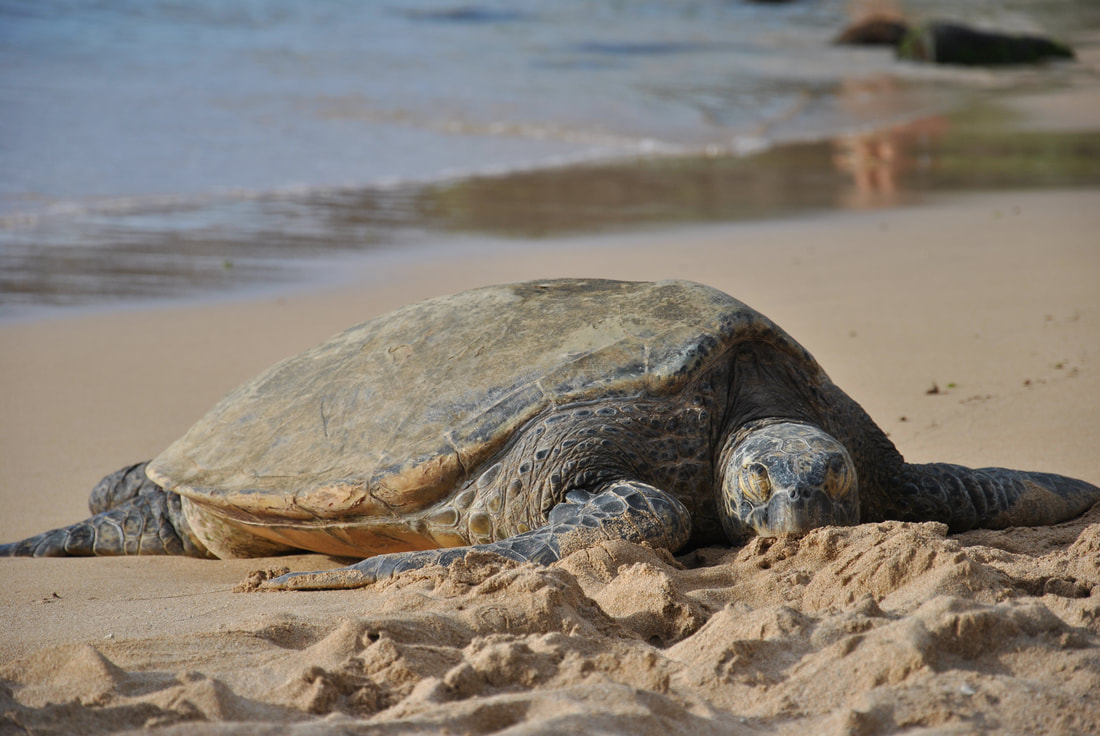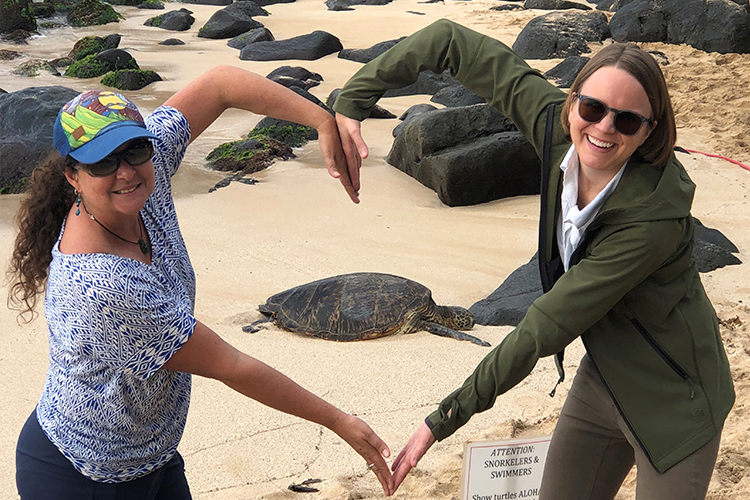Turtles lay eggs in Hawaii from May to October. The nesting season typically peaks in June and July.
In Hawaii, turtles play a vital role in the marine ecosystem, with their nesting habits attracting tourists from around the world. The warm sandy beaches provide the perfect environment for these ancient creatures to lay their eggs and continue the cycle of life.
Conservation efforts are in place to protect these nesting sites and ensure the safety of the eggs until they hatch. Witnessing a turtle laying eggs in Hawaii is a truly remarkable experience, showcasing the wonders of nature and the importance of preserving these majestic animals for future generations to appreciate.
Turtle Nesting Season In Hawaii
The Turtle Nesting Season in Hawaii is a truly remarkable natural event that draws visitors from around the world. Hawaii’s stunning beaches provide the perfect nesting grounds for green sea turtles, also known as honu in Hawaiian. Witnessing these ancient creatures come ashore to lay their eggs is a rare and awe-inspiring experience. Understanding the timing and factors influencing the nesting periods can enhance the appreciation of this incredible phenomenon.
General Timing
Turtle nesting season in Hawaii typically occurs between May and October. However, peak nesting months are from June to August. During this time, female sea turtles make their way to the beaches to lay their eggs. The exact timing can vary depending on the specific location and environmental conditions, so it’s essential to be mindful of local guidelines and restrictions to ensure the safety and protection of these majestic creatures.
Factors Influencing Nesting Periods
- Temperature: Warmer sand temperatures tend to result in more female hatchlings, while cooler temperatures produce more male hatchlings.
- Beach Conditions: The availability of suitable nesting sites, including sandy beaches with minimal obstructions, can impact the nesting behavior of sea turtles.
- Human Interference: Human activities on the beaches can disturb nesting turtles, leading to potential disruptions in the nesting process.
- Conservation Efforts: Conservation initiatives and preservation of nesting habitats play a crucial role in ensuring the successful nesting and hatching of sea turtles in Hawaii.
Turtle Species In Hawaii
Hawaii is home to two main species of sea turtles: the Green Sea Turtles and Hawksbill Sea Turtles.
Green Sea Turtles
Green Sea Turtles, also known as honu in Hawaiian, are one of the most iconic turtle species found in Hawaii.
- They are known for their vibrant green shells and friendly demeanor.
- Green Sea Turtles can often be spotted basking in the sun on the shores of Hawaii’s beaches.
- These turtles play a vital role in maintaining the health of coral reefs by grazing on algae.
Hawksbill Sea Turtles
Hawksbill Sea Turtles are another species commonly found in the waters around Hawaii.
- These turtles are named for their distinctive hooked beaks, which resemble that of a hawk.
- Hawksbill Sea Turtles are known for their beautiful patterned shells that are highly sought after.
- They play a crucial role in the ecosystem by feeding on sponges and helping to maintain the balance of marine life.
Both Green Sea Turtles and Hawksbill Sea Turtles are protected species in Hawaii, and it is a privilege to witness these magnificent creatures in their natural habitat.
Nesting Behavior
Selection Of Nesting Sites
Turtles in Hawaii exhibit fascinating nesting behaviors, particularly in their selection of nesting sites. Female turtles meticulously choose beaches with soft, sandy substrates and minimal vegetation, ensuring a suitable environment for egg laying. The ideal nesting sites are typically located above the high tide line to protect the eggs from being inundated by seawater. The selection of nesting sites is crucial for the successful incubation and hatching of the turtle eggs.
Egg Laying Process
Once the ideal nesting site is chosen, the female turtle begins the egg laying process, usually during the nighttime to avoid predators and excessive heat. The process involves the female turtle digging a deep pit in the sand using her flippers. She then carefully deposits a clutch of eggs into the pit, covering them with sand to provide insulation and protection. After completing the egg laying process, the female turtle returns to the ocean, leaving the eggs to undergo the incubation period. This natural process ensures the survival of the turtle species in Hawaii.

Credit: dlnr.hawaii.gov
Conservation Efforts
Turtles are fascinating creatures that have been around for millions of years. These gentle giants are an important part of Hawaii’s ecosystem, and their conservation is crucial for maintaining the balance of the islands’ natural habitats. One of the most exciting events in the life cycle of turtles is the nesting season, when they lay their eggs on Hawaii’s beaches. In this post, we’ll take a closer look at when turtles lay their eggs in Hawaii and the conservation efforts in place to protect them.
Protection Of Nesting Sites
One of the most important conservation efforts in place for turtles in Hawaii is the protection of their nesting sites. Hawksbill, green, and leatherback turtles all nest on the beaches of Hawaii, and these sites are protected by law. The state of Hawaii prohibits the harassment, capture, or killing of turtles, and it is illegal to remove eggs or disturb nests. This protection ensures that turtles can lay their eggs in peace and that the hatchlings have the best chance of survival.
Monitoring And Research Programs
Another crucial aspect of turtle conservation in Hawaii is monitoring and research programs. These programs are designed to help scientists understand more about the nesting habits of turtles and to monitor the health of the population. Researchers track the number of nests, the number of eggs, and the number of hatchlings that make it to the water. They also monitor the health of the turtles themselves, looking for signs of disease or injury. By gathering this information, researchers can identify threats to the turtle population and take action to protect them.
Conclusion
The conservation efforts in place for turtles in Hawaii are essential for protecting these amazing creatures and ensuring that they continue to thrive in their natural habitats. By protecting nesting sites and conducting monitoring and research programs, we can help to preserve the turtle population for future generations to enjoy. If you’re lucky enough to visit Hawaii during the nesting season, be sure to follow the rules and guidelines in place to protect these gentle giants.
Tourism And Education
Ecotourism is one of the fastest-growing sectors in Hawaii, with visitors coming from all over the world to experience the natural beauty and unique wildlife of the islands. One of the most popular attractions is the nesting season of Hawaiian green sea turtles, which takes place between May and October every year. This is a unique opportunity for tourists to witness this incredible natural phenomenon, but it’s important that they do so responsibly and with an educational mindset.
Responsible Tourism Practices
When it comes to observing the nesting habits of turtles, there are some important guidelines that visitors should follow to ensure that they are not disrupting the turtles or their habitat. These include:
- Staying at least 10 feet away from nesting turtles and hatchlings
- Not using flash photography or video lights
- Not touching or handling the turtles or their eggs
- Not leaving any trash or food on the beach
By following these guidelines, visitors can help protect the turtles and their habitat while still enjoying the experience of seeing them in the wild.
Educational Initiatives
Another important aspect of turtle nesting season is the opportunity for educational initiatives to teach visitors about the turtles and their habitat. Many tour operators and organizations offer educational programs, including guided walks and talks on the beach, to help visitors learn more about the turtles and their behavior. These programs can be a great way to engage visitors and promote responsible tourism practices.
Overall, turtle nesting season in Hawaii is a unique and exciting opportunity for visitors to experience the natural beauty of the islands. By following responsible tourism practices and participating in educational initiatives, visitors can help protect the turtles and their habitat while still enjoying this incredible natural phenomenon.
Challenges And Threats
Hawaii is home to several species of sea turtles, including the green sea turtle and the hawksbill turtle. While these creatures have adapted to the natural challenges of their environment, they face numerous threats, primarily due to human interference and the impact of climate change.
Human Interference
The nesting habitats of turtles in Hawaii are increasingly threatened by human activities such as coastal development, pollution, and recreational disturbances. These disturbances can disrupt the nesting process and lead to a decline in the turtle population.
Climate Change Impact
The rising temperatures and sea levels due to climate change pose a significant threat to the nesting sites of turtles. Higher temperatures can affect the sex ratio of hatchlings, and the loss of nesting beaches due to sea-level rise can further endanger the survival of these species.
Regulations And Guidelines
Regulations and guidelines play a crucial role in protecting sea turtles and their nesting habitats in Hawaii.
Laws Protecting Sea Turtles
- Harassing or harming sea turtles is illegal under federal and state laws.
- Disturbing turtle nests or eggs can result in significant fines and penalties.
- It is essential to follow designated turtle watching areas to avoid interference.
Guidelines For Beachgoers
- Avoid approaching or touching nesting turtles or their eggs.
- Keep a safe distance and observe quietly without causing disturbance.
- Remove beach furniture and trash to maintain a clean nesting environment.

Credit: www.fisheries.noaa.gov
Future Outlook
The future outlook for turtle egg laying in Hawaii holds promise, but also presents challenges. As the environment continues to change, it’s crucial to consider the sustainability of turtle populations and their adaptation to these changes.
Sustainability Of Turtle Populations
Ensuring the sustainability of turtle populations in Hawaii is a critical aspect of preserving the natural ecosystem. Conservation efforts, such as protecting nesting sites and reducing human impact on beaches, play a vital role in maintaining healthy turtle populations.
Adaptation To Changing Environments
Turtles have shown remarkable adaptation to changing environments over time. However, with the increasing threats posed by climate change and human activities, it’s essential to monitor and support their ability to adapt to these challenges.

Credit: www.privatetourshawaii.com
Conclusion
Understanding the nesting habits of turtles in Hawaii is crucial for their protection. By being aware of the timing and locations of their egg laying, we can take steps to ensure their safety. Protecting these ancient creatures is not only important for the ecosystem, but also for preserving the unique beauty of Hawaii’s beaches.





Leave a Reply